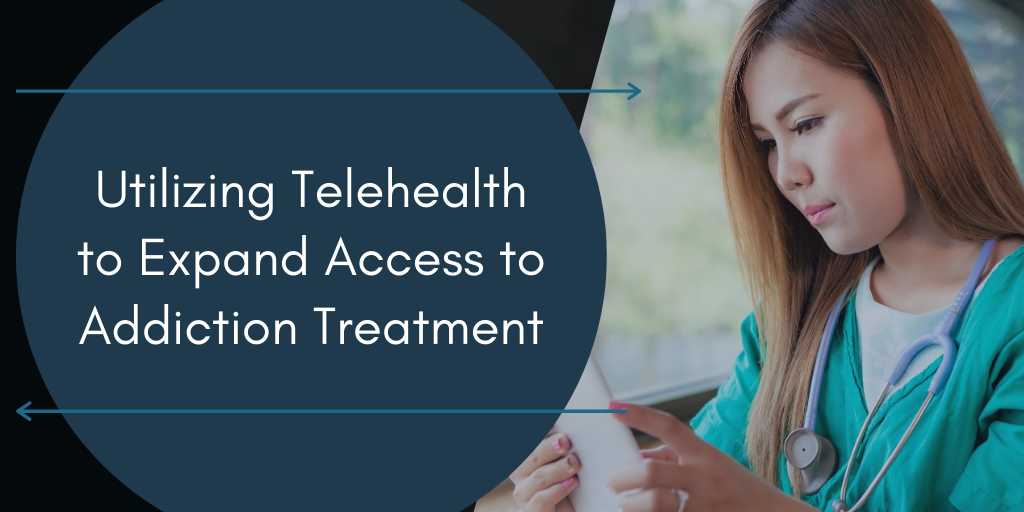There is an ever-growing movement towards expanding telehealth resources to provide a variety of healthcare services to communities. Since 2009, the Robert Wood Johnson Foundation has been funding initiatives that use technology to connect a variety of healthcare resources to underserved communities through Project ECHO (Extension for Community Healthcare Outcomes). In July 2019, the National Institutes of Health (NIH) announced the establishment of the Justice Community Opioid Innovation Network (JCOIN), as part of its Helping to End Addiction Long-term (NIH HEAL) Initiative. The NIH HEAL Initiative launches research centers to evaluate addiction treatment, including telehealth, in criminal justice settings.
Recent policy changes during the COVID-19 pandemic have reduced barriers to telehealth access and have promoted the use of telehealth as a way to deliver acute, chronic, primary, and specialty care. Utilizing telehealth is encouraged during this time, as it can reduce staff exposure to ill patients, preserve personal protective equipment (PPE), and minimize the impact of patient surges on facilities. Recent state and federal changes have allowed for easier care for patients seeking addiction treatment in the time of COVID-19.
In addiction treatment and recovery, telehealth can also enable much-needed consistency by facilitating resources and platforms that can provide long-term connectedness, guidance, and access to evidence-based resources. Even medication-assisted treatment (MAT), including the treatment of opioid use disorders, shows promise via telehealth service delivery.
Telehealth Approaches
Telehealth approaches in addiction treatment and recovery typically fall under the synchronous method or the asynchronous method. In the synchronous method, the client and the addiction treatment provider are connected and work together at the same time. In an asynchronous method, the client can access the service whenever it is needed and does not have to rely on a provider’s availability.
Synchronous approaches include the following:
- Telephone support where care is delivered via phone.
- Video conferencing where care is delivered via a secured internet connection and/or a designated location where the provider and client can see and speak with each other.
- Texting applications allow clients to reach out for support via text messaging and can also be utilized by providers to check in or provide care.
Asynchronous approaches include the following:
- Mobile applications that clients can download and interact with to receive ongoing motivation and support for their recovery.
- Web-based resources that allow a client to work through the information within the program.
- Virtual-reality resources that offer users individual virtual experiences designed to enhance their treatment and recovery, through which they can navigate.
What Is Impeding the Expansion of Telehealth for Addiction Treatment?
The resources that offer opportunities to improve addiction treatment and recovery support services continue to evolve, but telehealth resources for addiction are far more underutilized than other telehealth resources. Studies have continued to evaluate the potential resources that technology can provide, as well as the barriers that exist in this constantly evolving environment. Medicaid data indicate that psychiatrists and social workers utilize telehealth at a higher rate than psychologists and addictions counselors.i
The ongoing issues that must be considered and addressed for the resources to be further utilized are the following:
- Start-up costs to establish telehealth resources in treatment settings can be prohibitive.
- Providers in rural settings may have limited access to the internet or insufficient bandwidth to conduct services.
- Privacy concerns related to the Health Insurance Portability and Accountability Act (HIPAA) must be considered.
- The differing state regulations can complicate services provided across state lines. Often the provider must be licensed by the state in which the client is living.ii
- Contact information of clients may change, so it can be hard for providers to provide follow-up contacts.
- Appropriate staff training is needed to assure quality service provision but is often not a reimbursable cost.
- Some providers and clients may desire a face-to-face delivery of services as opposed to virtual service delivery.
Benefits in Supporting the Expansion of Telehealth for Addiction Treatment
While the challenges listed above should be considered when transitioning to telehealth services for addiction treatment, changes made in response to the COVID-19 pandemic have made it easier for both health care providers and patients to meet in a safe setting:
- Numerous federal and state regulatory relief initiatives, such as eliminating the regulatory requirement for obtaining a DATA 2000 waiver to prescribe medications, allowing longer prescriptions for buprenorphine, and requiring naloxone distribution have been implemented.
- Insurance payers have supported the transition to telehealth services during the pandemic. The Centers for Medicare & Medicaid Services (CMS) has issued multiple waivers to address reimbursement issues.
- Helps maintain continuity of care and provides relief for patients who regularly had transportation limitations in attending appointments.
- More on-demand options, with reduced wait times.
Telehealth Resourcesiii
- Addiction-Comprehensive Health Enhancement Support System (A-CHESS)—Center for Technology and Behavioral Health
- Telehealth Programs—Health Resources and Services Administration
- Telehealth During the COVID-19 Emergency—HHS
- Using Telemedicine to Combat the Opioid Epidemic—HHS
References
iHancock, Christine, Heidi Mennenga, Nikki King, Holly Andrilla, Eric Larson, and Pat Schou. “Treating the Rural Opioid Epidemic.” National Rural Health Association Policy Brief (February 2017). https://www.ruralhealthweb.org/NRHA/media/Emerge_NRHA/Advocacy/Policy%20documents/Treating-the-Rural-Opioid-Epidemic_Feb-2017_NRHA-Policy-Paper.pdf.
iiMolfenter, Todd, Roger Brown, Andrew O’Neill, Ed Kopetsky, and Alexander Toy. “Use of Telemedicine in Addiction Treatment: Current Practices and Organizational Implementation Characteristics.” International Journal of Telemedicine and Applications 2018 (2018): 1–7. https://doi.org/10.1155/2018/3932643.
iiiWeintraub, Eric, Aaron David Greenblatt, Joy Chang, Seth Himelhoch, and Christopher Welsh. “Expanding Access to Buprenorphine Treatment in Rural Areas with the Use of Telemedicine: Buprenorphine in Rural Areas With Telemedicine.” The American Journal on Addictions 27, no. 8 (December 2018): 612–17. https://doi.org/10.1111/ajad.12805.
<p style=”background-color: #e4e5ea; text-align: center;”><strong>Like what you’ve read? <a href=”https://signup.e2ma.net/signup/1819583/1776550/”>Sign up to receive the monthly GAINS eNews!</a></strong></p>


